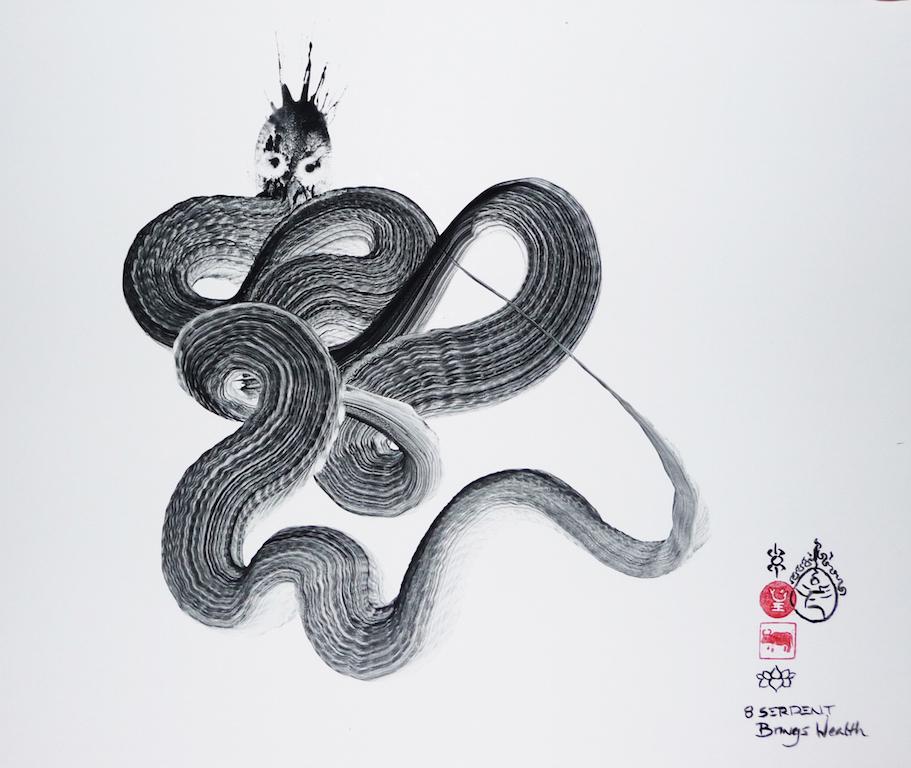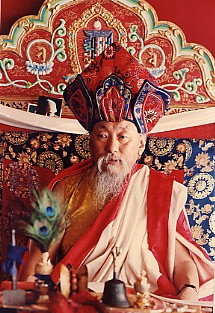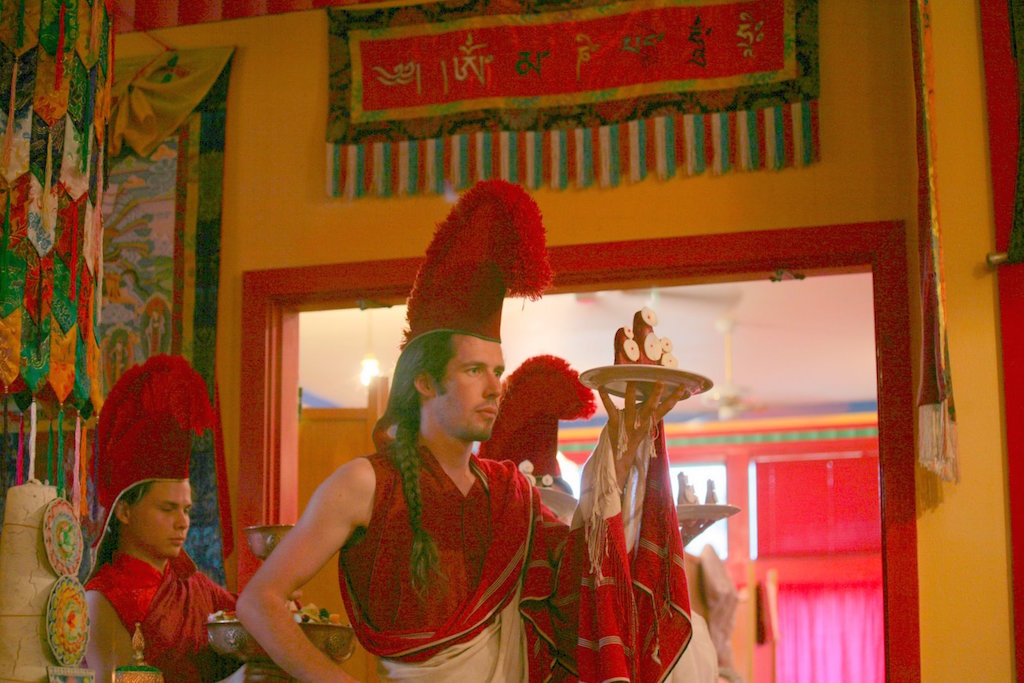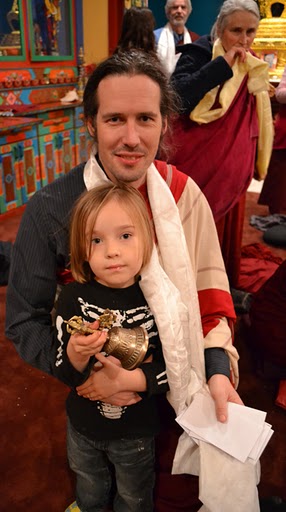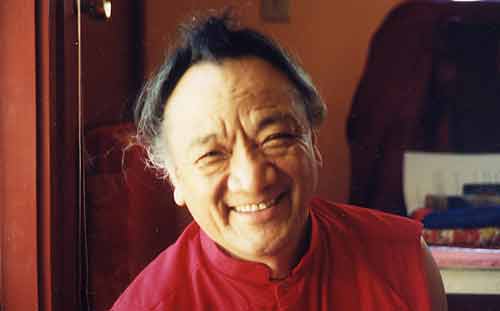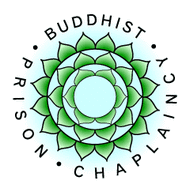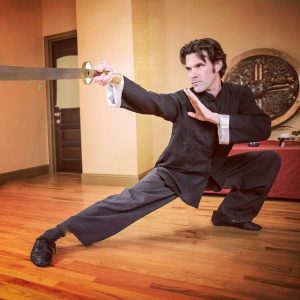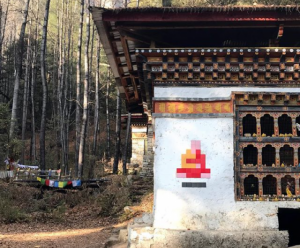At 9,000 feet in the Sangre de Cristo Mountains, surrounded by long-haired hippies chanting, praying, singing, smoking marijuana, ringing bells, and waving vajras, I was born. Although my parents were not Buddhist in the traditional sense of having formally committed to the sources of Refuge as the supreme truth, they gave me the name Dorje. Dorje as a name is highly symbolic, with many levels of meaning in the Tibetan language. It is Tibetan for the word vajra, or the thunderbolt symbol held by the Hindu god Indra.
The name sat like a Dharma time bomb. A bomb buried by the American school system, where my elementary school teachers kept trying to make Dorje into a version of the Spanish name Jorge. Buried by years of Sunday school and confirmation classes in a Lutheran church. Buried in the angst of being a teenager in Seattle during the Reagan years, the pressure to become something that produces capital and prestige for the family. Buried deep and simmering, the very name a calling in itself.
My grandfather’s name was Richard Daiensai Kirsten. He was an ordained Roshi of the Rinzai sect of Zen, and was given the instruction to teach through painting by his master. Years later, he would hand to me the lineage of the Single Stroke Serpent painting of the yamabushi (the mountain priests of Japan famous for their grueling marathon pilgrimages), but I do not remember him speaking about Buddhism—rather, I remember him bringing rice paper candy back from his travels to Japan. He always smelled of incense, though, and his garden was filled with Buddha images. There was a dichotomy in my family between the Christians and the Buddhists. The Buddhists—my father and grandfather—were silent, but deeply into mythological study. The Christians held sway over the holidays that marked the seasons and resonance with an American culture that had not yet diversified. Their hymns and church services were made up of words that, for me personally, held no depth. Words I found did nothing to illuminate the inner workings of my mind. I had an urge for more, but it remained latent—the answers would elude me until I went to college.
On a sunny afternoon in August of 1991, I walked into a Tibetan handicrafts shop in Santa Fe. I was traveling from St. Petersburg, Florida, to Seattle. The flutter of prayer flags called me like the hook of Kurukulle into the little shop, which was up in the Cerro Gordo canyon. The shopkeeper said, “Your name is Dorje? You must have this ring!” and placed a silver Kalachakra ring, along with The Kalachakra Tantra by Geshe Ngawang Dhargyey, in my hand. Something about this text and symbol was mesmerizing. The symbol solely possessed my mind. Ignorant of the matters of initiation, I began meditating on the deity and reciting the mantra. Once at the University of Washington, I asked my Buddhist Studies professor what the symbol meant and mentioned my experiences. He urged me to find a lama. At the time, though, the rampant sway of materialism and hallucinogens was a stronger force in my spiritual search. The clear path forward had not yet opened up.
One year later, I found myself again in Santa Fe where, once more, the name Dorje would be like the hook of Kurukulle. A young friend who was a student there turned to me one afternoon: “Your name is Dorje?” he said. “You should come get a Tibetan Buddhist empowerment!” Two hours later, I found myself being initiated into the school of the Shangpa Kagyu under the guidance of Lama Norlha. As the empowerment caused experiences of bliss and emptiness to arise, my mind felt like it had come home. This was like no religious experience I had had before—it was like tasting honey for the first time! My appetite grew, and I began to look for a teacher.
This pursuit took me to the Naropa Institute in Boulder, Colorado, where Dzigar Kongtrul Rinpoche was residing as the world wisdom chair. The Naropa Institute is a singularly unique entity in the world of Buddhism, a place where the concepts of Western wisdom, born of thousands of years of experimentation with science, psychology, and art, are allowed to dissolve like shattered ice into the warm water of the singular wisdom of Shakyamuni and Guru Rinpoche. Here one finds the capacity to be an American and a Buddhist, like a crow finding food in a mall parking lot, a mash up of spirit and cola. Here, Vajrayana becomes sanitized as Maitri psychology, and vipashyana and shamatha are available for all who walk through the door as a cool nectar to soothe the heat of unbridled materialism and intellectualism. Dzigar Kongtrul taught the practice of the Ineffable Four Immeasurables there, a treasure that I will be forever indebted to have received. When I asked him to be my teacher, he looked into my eyes, then wrote down a name in Tibetan script. “You have karma with this teacher,” he said. “He lives in California.” The name was “Chagdud Tulku.” Nine months later, I had dropped out of college and was living at Rigdzin Ling, HE Chagdud Tulku Rinpoche’s North American seat.
There are very few people in this world who are capable of manifesting the full mandala of the Vajrayana. There are even fewer who are able to manifest it in the border lands, places where the Buddha Dharma is a still a seed. The fourteenth Chagdud Tulku Rinpoche (1930–2002) was one of those people. He was a great bodhisattva, the embodiment of the Lord of the Dance in human form. At the time I met him, his body was like that of an ancient Chinese sage—similar to Mr. Miyagi from The Karate Kid—but filled with the vajra power of bringing liberation to all who saw him, heard him, touched him, or recalled him.
At Rigdzin Ling, the Vajrayana is taught from the perspective of the Nyingma tradition, but one who spends time there receives training in all Nine Yanas. Under the kindness of Chagdud Tulku, Jigme Tromge Rinpoche, Chagdud Khadro, Lama Padma Dorje, Lama Drimed Norbu, Lama Chodak Gyatso, Lama Sonam Tsering, Lama Jigme Lodro, and Lama Pema Tenzin, to name but a few, I was given the opportunity to master the care and establishment of mandala shrines in this tradition, and became one of the first Western chöpöns (shrine attendants) to be able to construct and maintain the ritual mandala for the ceremony of Great Accomplishment (Drubchen).
Under the guidance of Jigme Tromge Rinpoche, Mahayoga is clearly taught at Rigdzin Ling. I was also trained thoroughly by the sublime yogi, Lama Padma Dorje Rinpoche, in the tradition of tsa lung (winds and channels practice) in the lineage of Rigdzin Srogdrub. Chagdud Tulku Rinpoche instructed me to receive Atiyoga teachings from Lama Drimed Norbu, who with great kindness explained them deeply and without error to me. Life at Rigdzin Ling was extraordinary, but the karma that allows one to spend time at a Dharma center is thin. If one has the good fortune to do so one must take full advantage of it, and after 14 years, my karma there came to an end.
Currently I call Arcata, California, home. Aside from the odd Dharma call to translate or advise on a ritual, I run a tea business and raise my four children. Like the rhythm of the tide, for laypeople life is an oscillation of integration into the Dharma and then integration of the Dharma into life in the world. The profundity of the Dharma is that it is, by definition, the truth, and the truth is found in the realms of the householder as much as in the great monasteries or the yogi’s solitary cave. As the Dharma continues to blend into America, instead of bending ourselves to adapt to the foreign cultures that have carried it, we must let it sink into who we are so that it transforms us breath by breath. The result is that, as the second and third generation of practitioners in the US, we are slowly reshaping America into a place that holds the Dharma. With that in mind, every morning when I wake up, I form the aspiration to benefit beings with my thoughts, speech, and actions, just as Dzigar Kongtrul Rinpoche instructs when he teaches the Four Immeasurables.
This article is one of a series on how Buddhism has impacted the lives of practitioners. We welcome you to send us your story as well.
Dorje Kirsten will be starting a regular column on Buddhism in America later this month. Keep an eye on our “Contributors” column for updates!


